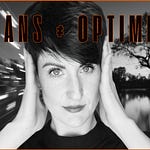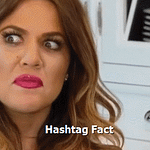Welcome to Creative\\Proofing, a space for hopeful, creative people learning to live wisely by asking questions about the good life: what it is, how to design our own, and how to live it well.
This newsletter is built on the hope of reciprocal generosity: I want to share what I find beautiful and meaningful, and I'd love for you to do the same. If you're inspired by anything I write, it would mean so much if you shared it with others, subscribed, dropped me a line and let me know, or paid according to the value it has for you. No matter what, I hope we can create and learn together.
Hello, and Happy August!!
I hope that, wherever you find yourself, you’re staying cool and well. Here in the South, it feels a bit like a jungle outside: heat, humidity, and lots of thunderstorms. (I love a good thunderstorm, but I am getting a bit weary of having the house shake every night.)
I have mostly recovered from having Covid in June, and still only feel random moments of lethargy. But otherwise I’m getting back into the groove, and wondering if I’ve recovered only to worry about new variants and infections. What a world.
But here we are, back with a new volume of Creative\\Proofing, and I’m revisiting a favorite (but hopefully not familiar) topic: liminality. I love the word, I love the concept, the ambiguity, I love the opportunities found in liminality…don’t always love the challenges and the discomfort of liminal periods. But its very amorphousness is the thing I love most about the liminal: the experience of exploration and discovery, and the hope that, somehow, on the other side, I’ll come to a renewed, surprising, enlarging insight about myself, the universe, and everything.
I hope these reflections can encourage you, if you find yourself in what feels like a disorienting darkness, to know that it doesn’t last forever. If you can learn to navigate it with creativity and courage, it can be an incredibly rewarding experience.
Encountering the threshold between the familiar and the unknown
Most of us, in our lives, focus on creating or maintaining some sense of stability, of predictability. We try to control our environment, our routines; we make cages of the familiar, to keep out the strange and uncanny. We feel that if we can predict our lives, we can guard against change, at least change we don’t want. But with that guarding comes calcification, stagnation, even insanity. And when change does come (as it inevitably will), we feel ourselves caught between opposing forces, twisted by the tension of those forces pulling on us. We fear, not what could be, nor who we could become in the process, but what we might lose on the way.
When we find ourselves with our lives, or aspects of our lives, in tension—perhaps our professional lives are stable and routine while a key friendship is falling apart—that can produce some cognitive or emotional dissonance with us. "How is it that everything in my life isn't falling apart?" or perhaps, "How do I keep this chaos over here from bleeding into the stability over there?"
Asking such questions recognizes that you, within yourself, are a small, entire ecosystem within larger ecosystems. The elements of your life interact and have an impact on each other as much as you interact with and have an impact elsewhere in the world. The question becomes, what will that interaction look like? Will it be uncontrolled and undirected, rolling over everything in its path? Or will it be thoughtful and intentional, working with the energy and directing it toward healthy ends?
The experience of interacting with tension in our lives, of navigating the process of untangling the forces of change, of encountering the threshold between the familiar and the unknown of our lives: this experience is known as the liminal.The key feature of the liminal is that we leave old selves and ideas behind, without knowing what comes next. We give up, or lose, control, and engage ambiguity, experience chaos. We often respond by attempting old patterns and techniques for coping, hoping it will return us to familiar, stable structures. But it's the shedding of the predetermined and predictable that enables us to cultivate openness, and patience. Only by undergoing the liminal experience will we find new truths, fresh realities.
Liminality appears in myths, characters, places, states of being, and theologies around the world, throughout history: Orpheus in Hades; trickster figures like Coyote in indigenous tales and Hermes in Greek stories; Jacob’s dream of the ladder to heaven in Hebrew scriptures; thresholds like caves, doorways, and crossroads; even psychological states such as dementia, or travel experiences such as flying. I’m fascinated by how it reappears as a significant experience in human lives, no matter what or when.
The liminal experience consistently goes through three different stages: separation, the liminal itself, and reorientation (or reformation). We break with our previous lives, identities, routines, structures, for whatever reason. Perhaps it's a crisis that forces us, a choice presented to us, or just a feeling of restlessness goading us to begin walking away from the familiar and ordinary. The liminal experience shatters our self-perceptions, the structures and patterns by which we filtered and understood our lives. But even as those old things disintegrate, we find ourselves presented with previously undisclosed or unconsidered options.
The liminal is where change can actually begin. If we desire transformation, we must be willing (if not ready) to enter the space between the already and the not-yet. We must be willing to discard normalcy, or at least give up idealizing or idolizing it.
Encountering pieces of yourself in the liminal
In the liminal process of collecting and curating the disintegrated pieces of oneself, it will necessarily call out emotional distress. This process can pull out responses and memories that feel overwhelming and unwelcome, that makes us want to shut it down before it has a chance to gain momentum.
Psychologist Richard Beck, reporting on a 2018 study by Anthony Burrow, Patrick Hill, Kaylin Ratner, and Thomas Fullwer-Rowell, introduced me to the concept of derailment. These authors describe derailment as the experience of not being able to reconcile the differences between our current and past selves or identities. It’s as if we see ourselves as two totally different people, with no connection, or continuity, or pathway between them. Obviously, this feels scary, destabilizing, stressful, and even somewhat depressing. But if we can reframe this process as a means of growth, it may still feel destabilizing, but can function more as what psychiatrist Kazimierz Dabrowski called "positive disintegration," the breaking down of what’s come before in order to cohere into more "emotionally complex beings."
This means sitting with that discomfort in the liminal space, welcoming what might feel like negative emotions in the moment. We often find here the emotions of grief, fear, pain, hope - all signals of vulnerability. Vulnerability feels unstable, frightening, and more often than not, we choose to anesthetize those feelings, rather than allowing them to guide us past the spaces on the map scrawled with the phrase "here be dragons."
I get it. For all my Enneagram Four-ness, I want to rush on the easier, more comfortable, less vulnerable places. But something I’m learning is that these liminal spaces can also be seen as an opportunity to make friends with yourself, to see if there's a deeper understanding you can uncover about yourself as a result of this distress. I love how artist and speaker Scott Erickson put it, in talking about what to do if you find yourself someplace that you don’t want to be. He says, “A great question you can ask yourself is, ‘What’s the only conversation I can have by being here?’”
What conversations can you have with yourself in the liminal?
Let’s be hopeful, creative, and wise—together.
Shalom,
Megan.













